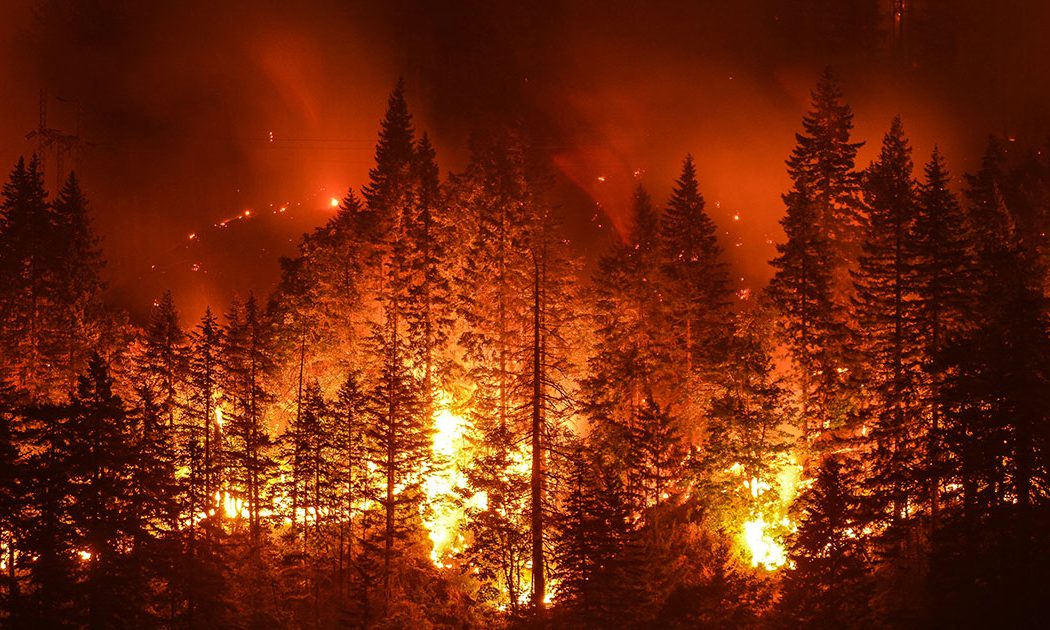Basic Facts About Wildfires
Wildfires have always been a global concern due to their destructive impact. Climate change, warmer temperatures, and urbanization have contributed to the increasing frequency, severity, and duration of wildfires. The number of wildfires in the United States has been steadily strengthening over the last few decades. Although some wildfires naturally occur and help keep forest ecosystems healthy, many are caused by human-related errors.
Adequate measures for prevention, preparedness, response, and recovery are essential in mitigating the physical and human costs associated with wildfires.
What are Wildfires
Wildfires are large, uncontrolled, and potentially destructive fires that often affect less populated areas in the wildland vegetation. From grasslands to forests and savannas, the fires spread quickly and change direction, making them really difficult to contain. All wildfires have significant impacts on wildlife and impose substantial economic costs.
From wildlife habitat destruction to the displacement of species, and loss of biodiversity, wildfires generally have a devastating impact on many ecosystems. They often destroy vegetation that serves as food sources for animals, leading to a decline in their populations. The smoke produced by wildfires can cause respiratory issues in wildlife, bringing in long-term negative effects.
In terms of economic costs, wildfires can result in property damage, loss of infrastructure, and disruption to various industries such as agriculture and tourism. The expenses associated with firefighting efforts and post-fire recovery further contribute to the economic burden.
How do Wildfires Form
Natural causes include lightning strikes, volcanic eruptions, and the accumulation of dry vegetation.
Human activities account for 84% of wildfires and unfortunately, these are often caused by arson, unattended campfires, discarded cigarettes, and equipment sparks. Two of the 2018 massive California wildfires were caused by sparks during dry and hot weather.
Once ignited, wildfires can have significant impacts on ecosystems as the intense heat from a wildfire can cause soil erosion and damage the nutrient cycle within the ecosystem
What Conditions Promote Wildfires?
Extreme dry conditions, such as prolonged drought, high temperatures, and strong winds, create favorable circumstances for the occurrence and spread of wildfires. Unfortunately, there is no easy and fast solution to prevent wildfires from occurring. Cutting greenhouse gas emissions to slow down climate change and improve forest management practices are the two main steps from a large-picture perspective.
Government agencies provide guidelines to prevent wildfires accidentally set by humans. Effective prevention strategies focus on implementing strict fire safety regulations and guidelines, educating the public about fire hazards and responsible behavior in fire-prone areas, conducting controlled burns to reduce fuel loads in forests, maintaining defensible spaces around structures to minimize wildfire spread, and promoting early detection systems to quickly respond to new fire ignitions.
Most of all, continued raised awareness about the environmental impact of wildfires can also encourage individuals and communities to actively participate in prevention efforts.
How Fires Support Healthy Ecosystems
Fires can also promote healthy ecosystems by facilitating nutrient cycling, controlling invasive species, and maintaining biodiversity. When fires occur naturally or through prescribed burns, they release nutrients from burned vegetation back into the soil. This process helps replenish essential elements needed for plant growth and supports the overall health of the ecosystem. By clearing old scrub and underbrush, fires can make way for new grasses, food, and habitat for animals and birds.
Fires also allow for the control of invasive species by reducing their populations or eliminating them altogether.
Prescribed burns, which are intentionally set under controlled conditions, can mimic natural fire regimes, and provide similar ecological benefits while minimizing the risk of uncontrolled wildfires.
Climate Change and the Overall Impact
Climate change is one of the most crucial factors contributing to the increasing frequency and severity of wildfires globally.
As temperatures rise and drought conditions become more prevalent, landscapes become drier and more susceptible to ignition. This, coupled with increased wind patterns resulting from climate change, creates ideal conditions for wildfires to spread rapidly and unpredictably. These fires not only destroy habitats and vegetation but also release large amounts of carbon dioxide into the atmosphere, exacerbating climate change further.
Health Concerns
The smoke produced by wildfires can negatively impact air quality and human health due to the release of harmful pollutants such as PM2.5, NO2, ozone, aromatic hydrocarbons, or lead. These pollutants can cause or exacerbate various diseases and are associated with premature deaths. Wildfire also threatens water quality, and often leaves behind unprotected land that can easily create mudslides.
Prevention
To prevent and manage wildfires in the face of climate change, the governing agencies should focus on reducing greenhouse gas emissions and implementing effective forest management practices. Today, the majority of the United States is in the most severe drought in recorded history. In 2022, the UN Environment Program reported that wildfires are expected to increase by 14% globally by 2030, 30% by the end of 2050 and 50% by 2100.
Sources:
https://www.who.int/health-topics/wildfires#tab=tab_1
https://www.ifrc.org/our-work/disasters-climate-and-crises/what-disaster/wildfires
https://www.edf.org/climate/heres-how-climate-change-affects-wildfires
https://www.plt.org/educator-tips/wildfires-causes-effects-educational-activities

